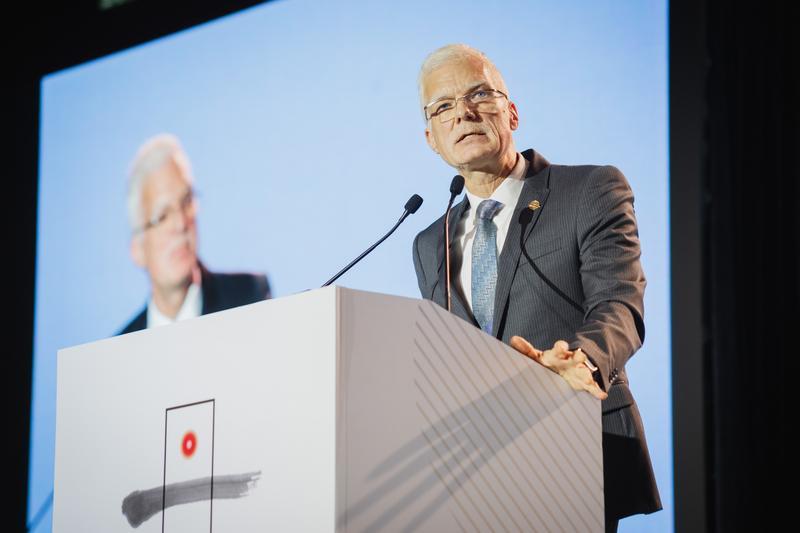English
Language isn't just a tool for communication — it's the bedrock of cognitive development and social interaction. The question of how we acquire language has fascinated experts for decades. Now, thanks in part to a Yidan Prize laureate, we’re starting to get some compelling answers.
Professor Usha Goswami, our 2019 Education Research laureate and a pioneer of cognitive developmental neuroscience at the University of Cambridge, stands at the forefront of this exploration. Her groundbreaking work is uncovering the very roots of how we learn to listen and, eventually, to speak.
Foundational rhythms
Think of the last time you heard a nursery rhyme or watched someone bounce a baby on their knee. These actions aren't just playful — they're foundational. Usha’s research highlights that these rhythmic experiences are central to learning language. From the sing-song patterns of "ma-ma" and "da-da" to the claps and bounces, it all comes down to rhythm. This insight could help unlock crucial support for kids who might not tune into these patterns as easily, providing a pathway for earlier identification and effective intervention.
Challenging existing theories
For a long time, the academic world clung to the belief that language learning starts with phonemes — the tiniest sounds that distinguish words. But Usha’s research paints a different picture.
Usha is currently at the helm of the BabyRhythm Project, a longitudinal study that will follow 122 babies across the first two and a half years of their lives to understand the process of language acquisition in more depth. Recently published in Nature Communications, early results from the ongoing project suggest that our linguistic journey begins with rhythm and stress patterns — long before phonemes come into play. This is a game changer because it shifts how we think about the process of learning to talk, especially considering that reading (where phonemes are crucial) is a much newer skill for humans than speaking.
Bridging gaps in language learning
Usha’s team’s findings could also have profound implications for children across the world with developmental language disorders (DLDs). In DLD, a child’s language fails to develop along normal lines unexpectedly. They make spoken errors like “She comb her hair” and “Yesterday I fall down”, and can also fail in literacy when being schooled before their linguistic skills fully develop.
DLDs affect over 15 million children worldwide. With support from the Yidan Prize, Usha’s now focusing on studying the neural origins of DLD. We already know that babies first learn language through rhythm. And existing research indicates differences in rhythm perception are a common thread among children with dyslexia. But how might language learning for children with DLDs be different? Understanding this may help to transform our approach to early diagnosis, targeted interventions, and more effective educational journeys.
The team is using neuroimaging techniques to assess the listening skills of primary school children, as well as their language, reading, memory, and attention skills. They’re given short language tasks, like listening to a story (which mimics natural speech patterns) or rhythmically repeated syllables.
A computer-based system is also in development to help children train their brain activity when listening to spoken language. Ultimately, the team hopes schools can adopt the technology and provide dedicated interventions for children with learning difficulties.
Shifting perspectives
Usha’s research offers a unique look into the neural underpinnings of how each of us learns to communicate. By shifting our perspective and applying these insights to rhythm and brain development, we can help caregivers, teachers, and therapists alike learn to support children with or without DLDs as they enter the world of language.
Beyond advancing academic success, Usha Goswami’s pioneering work could give more children the chance to express themselves more fully and connect more deeply with the world around them.
——
Sources:
https://www.cne.psychol.cam.ac.uk/yidan-project
https://www.bbc.co.uk/tiny-happy-people/articles/zk8dscw
https://www.nature.com/articles/s41467-023-43490-x
https://www.nurseryworld.co.uk/features/article/eye-supplement-research-how-rhythm-and-tone-are-key-for-the-early-language-learning-brain











